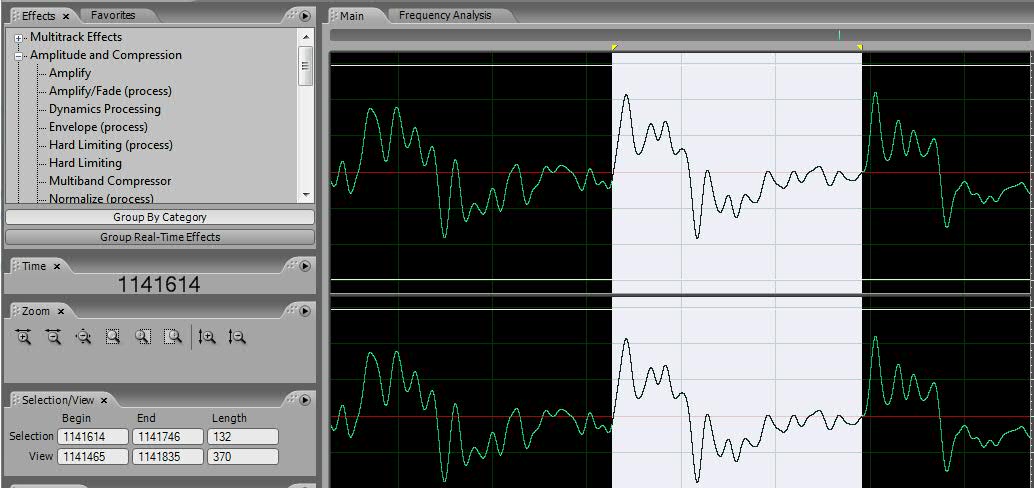I had to throw out all the glissando tables that Csounds’ PitchAMDF produced. The tool has some bugs, but mostly the problem is pitch tracking in general is hard. I switched to a method that uses Adobe Audition to count the samples between zero crossings. Well, not really zero crossings. Every zero crossing is not a fundamental. So I have to use judgement to pick the appropriate pitches. For example, here’s a section of the word “this“, as in “what difference at this point does it make?” from Hillary’s remarks.

Notice how I’ve marked a section that includes several zero crossings, but how the marked section clearly repeats. It takes up 132 sample frames in the audio file. At 48kHz sampling rate, that’s 363.636 Hz, around an F+ or 34 in the 72 EDO scale. I sampled every thousand frames or so in the audio file, around 800 different sections, and built cubic polynomials that tracked through those pitches, using Csound. I modulate the pitch of a flute, trumpet, vibraphone, finger piano, and guitar strings using those cubic polynomial function table. Here’s the result. This isn’t music yet. And it gets really wild towards the end, probably because of a coding error on my part.